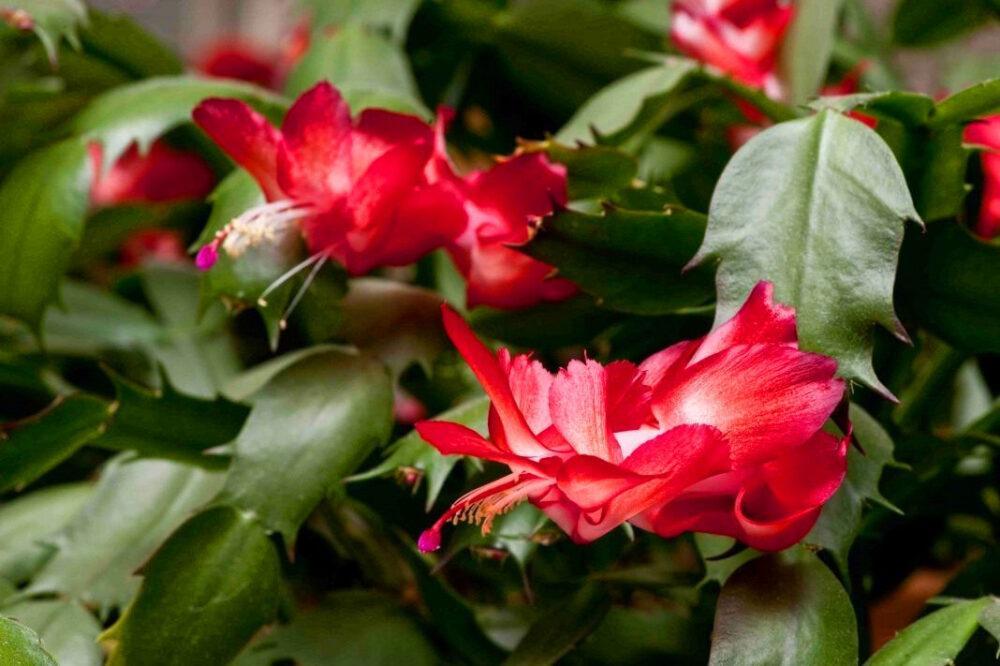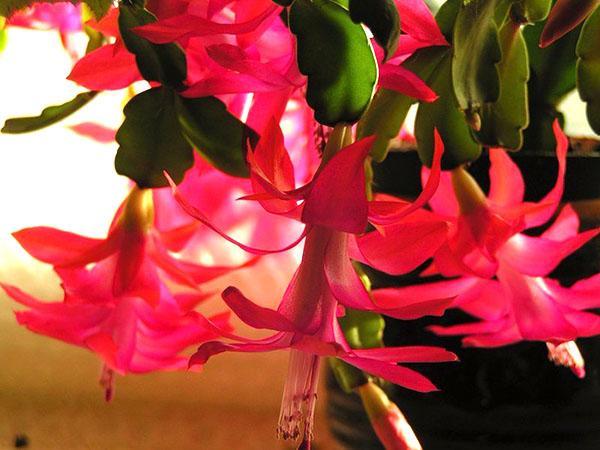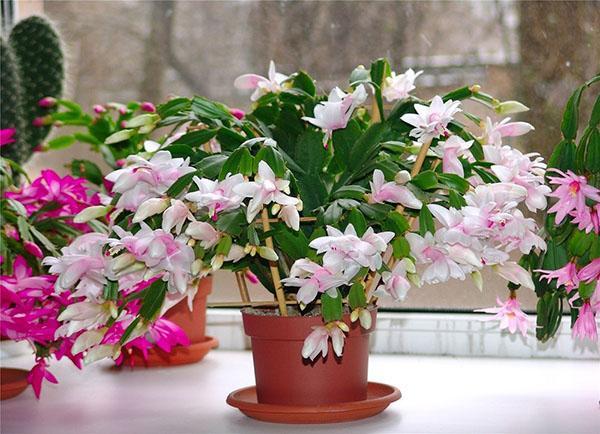Learning to properly care for the zygocactus
 In winter, you can often see bushes on the windowsills, strewn with bright pink, crimson or white flowers at the ends of the branches. This zygocactus is a plant of the genus epiphytic cacti. In our country it is often called the Decembrist - by the time of flowering, or Schlumberger, and in European countries - the Christmas flower.
In winter, you can often see bushes on the windowsills, strewn with bright pink, crimson or white flowers at the ends of the branches. This zygocactus is a plant of the genus epiphytic cacti. In our country it is often called the Decembrist - by the time of flowering, or Schlumberger, and in European countries - the Christmas flower.
Description of the plant

The plant got to Europe two hundred years ago thanks to a botanist collector and quickly gained popularity thanks to the lush and so rare in the northern hemisphere winter flowering.
How to properly care for a zygocactus
 This plant is unpretentious, but for abundant flowering, you need to follow a number of rules and know the periods of the life cycle in which care for it differs. There are four such periods:
This plant is unpretentious, but for abundant flowering, you need to follow a number of rules and know the periods of the life cycle in which care for it differs. There are four such periods:
- End of winter and spring. Rest time. During this period, the flower needs bright or diffused lighting, a low temperature - + 12-15 ° C, moderate air humidity and rare watering.
- Summer. Time of active growth. Dim light, high humidity, frequent watering and spraying. The temperature should be increased to + 17-22 ° С.
- Autumn. During the dormant period, it is better to expose the plant to the northeast or northwest window, lower the air temperature again to + 12-15 ° С, reduce watering and reduce humidity.
- The beginning and the middle of winter. During the flowering period, the temperature should be raised to + 17-22 ° С, the air humidity and watering should be increased.
During flowering, spraying should be done carefully, avoiding water getting on the flowers. It is undesirable to move the flower to another place.
How to transplant a flower correctly
Zygocactus is transplanted at the end of winter, after it has faded.
Young plants are transplanted every year, adults after a few years.
Choosing a new pot for the Decembrist, stop at a wide and shallow one, since its roots do not develop in depth, but in breadth.
The soil for it should be light, breathable, slightly acidic. Drainage is poured into the bottom of the pot about a third of the depth - brick chips, small expanded clay. Charcoal powder can be added. It will make the substrate even easier and disinfect. A little fresh soil mixture is poured over the drainage, the plant is taken out along with a small lump of earth, the excess is gently shaken off and set in a new place. The roots must be spread carefully. Then, little by little, fresh earth is poured in and compacted. After planting, the Decembrist is watered and sprayed.
Observing the rules of caring for zygocactus at home, you can achieve the same abundant flowering as in the photo below:
Strongly overgrown Decembrist is easy to shape. Just pinch off excess shoots or shorten them by twisting the segments with your hands. This must be done carefully.
A well-formed bush will be evenly illuminated, less sick with various rot and bloom in unison.
Reproduction of the Decembrist
 At home, it is easy to propagate zygocactus vegetatively.It is better to do this before the beginning of a period of active growth - in late spring or early summer. To get cuttings, you need to carefully twist a part of the stem with 2-3 segments with one hand, holding the rest with the other hand.
At home, it is easy to propagate zygocactus vegetatively.It is better to do this before the beginning of a period of active growth - in late spring or early summer. To get cuttings, you need to carefully twist a part of the stem with 2-3 segments with one hand, holding the rest with the other hand.
Cut the zygocactus with your hands only, without the help of scissors.
The resulting cuttings are dried for two to three days, then placed in a small container with wet sand, slightly deepening. The planted stalk is covered with glass or foil, creating a mini greenhouse. Before the roots appear, the seedlings are placed in a bright, warm place, avoiding direct sunlight. Ventilate the greenhouse with cuttings regularly and moisten the sand. Rooted cuttings are transplanted to a permanent place.
Pay attention to the correct planting of the zygocactus cuttings in the photo:
Why does the Decembrist not bloom
 There may be several reasons:
There may be several reasons:
- Before flowering, the zygocactus must go through a dormant period. At this time, he gains strength and lays flower buds. If the Decembrist did not collect the buds by November, it means that during the dormant period there was too high a temperature or excessive watering.
- Try to move the pot from place to place as little as possible.
- The soil is too poor. Feed the plant with a complex fertilizer containing boron.
Subject to these simple care rules, the zygocactus will delight you with a festive scattering of flowers every winter.
Thanks for the helpful tips. I have a question. The young zygocactus has faded white. (she took this one) New buds appeared next. They bloomed red. Can this be? Why?
With white-flowered zygocactus, this sometimes happens if during the budding period it was cold at night (below 12-10 degrees Celsius). They say that if pink plants are moved to a warmer room, it, on the contrary, will turn pale.
Olya, thanks for the answer.